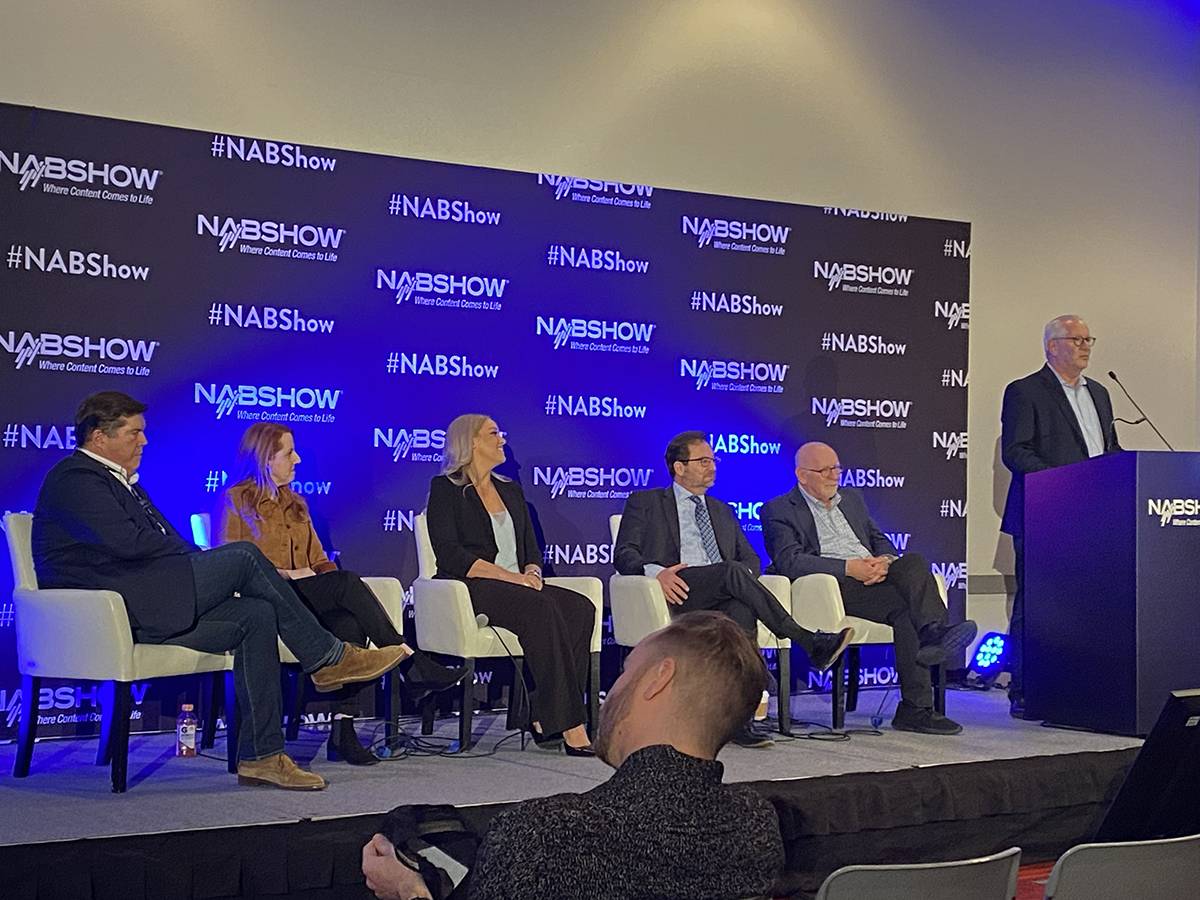The panel for this session included Fred and Paul Jacobs (Jacobs Media), Suzi Shultz and Steve Newberry (QUU), Joe D’Angelo (Xperi) and Lesley Rohrbaugh (CTA).
Is radio doing a good job with in-car displays?
No, says the panel, though there have been improvements, and according to Paul Jacobs, there is still a long way to go to catch some of radio’s competitors.
He says it is important that, “…radio looks as good as possible in the car. We should not look less than our competition, we should look great.
“Metadata is critically important, and the way our stations put it out in the car is something (radio stations) can control.”
Fred says not only is the car dashboard changing, the expectation of the driver and passenger is also changing.
Gone are the days of just having 5 or 6 pre-set stations and a handful of buttons and a couple of dials.
According to Jacobs Media’s Techsurvey 2022 more than 8 in ten core radio listeners can connect a smartphone to their car.
Among these listeners Bluetooth has now overtaken FM radio as the most important feature in a new car. AM radio has now dropped away to 33%.
AM/FM radio listening is going down, trending lower year on year for the past 5 years.
Among those who own cars with a connected system, the AM/FM listening drops away by a further 9% to 47%, behind Sirius and Spotify.
Three out of four cars can display Artist and Title information, but car owners want something different.
While radio stations have been intent on just displaying Artist and Title information, a survey of car owners had a preference for some of the following items
- Emergency weather (52%)
- Artist title next song (42%)
- Current game score (32%)
- Name of DJ/Host (31%)
- Year song came out (30%)
See Fred’s latest blog “When It Comes To In-Car Listening, Is Radio Leaking Oil?”
Joe D’Anglo from Xperi says his new DTS AutoStage is a solution to radio being outmanned, out gunned, out funded and fragmented in the car, while the competition is not.
He says If radio is going to compete, stations must have a solution.
DTS AutoStage can also provide feedback to stations on the listening habits of drivers.
Now over 80% of vehicles are getting a touch screen with voice control also growing.
Steve Newberry from QUU also owns a number of stations, and says he spent time sitting in different car makes to understand the limitations of RDS, and says radio stations have a messaging problem when it comes to in-car systems.
RDS and HD systems can use similar messaging while HD allows visuals as well, and 80% of systems can display text as a minimum, but that the radio industry has so far failed to give a consistent message to the car manufacturers.
Steve says that the addition of backup cameras to vehicles meant that the quality of screens improved for better quality video, and that has changed the screens in cars to make RDS much better. (Go here for his interview with radioinfo’s Wayne Stamm about RDS.
He says that stations have to realise that RDS messaging must match what is happening on the radio, a criticism QUU heard from listeners.
These listeners felt that if the RDS didn’t match or was slow to move onto the next item being played, most of those surveyed though it was the fault of the station.
The consensus of the panel was that radio is doing better on car displays, but still has a long way to go.
The NAB has published a Digital Dashboard Recommended Best Practices


Comment on RDS messaging and messaging on DAB+ and interactivity.
First, it is true that the scrolling text messaging systems on RDS (FM) and DAB+ is limited. The scrolling text is slow and difficult to monetize. The text are limited to displaying weather, traffic, news snippets, music track information and the radio station's talkback line.
It is true that DAB+ has the potential to display graphics such as a radio station's logo but one has not seen DAB+ receivers in the retail stores which display graphical information. That's unless you purchase a DAB+ development kit for engineers,
ref https://www.monkeyboard.org/shop/index.php?main_page=product_info&products_id=196
Displaying moving pictures and having interaction with the radio is quite a novel idea.
But as I said at https://radioinfo.com.au/news/can-the-hd-radio-experience-be-of-use-in-regional-australia-nabshow. I don't approve of interacting with the radio while driving. I've made my point at this page including the legislation to implement the prohibition of interactivity with the radio while driving in the same way that DVD and video from a USB stick with video files cannot operate while the driver is driving.
Have interaction with your radio at home or at work, but not while driving. Furthermore any smart radio should have an "OFF/ON" switch if one wants to or does not want to send back information via a WiFi and/or LAN (RJ45).
Thank you,
Anthony of saying the same thing as before but in a different way, Belfield in the land of the Wangal and Darug Peoples of the Eora Nation.